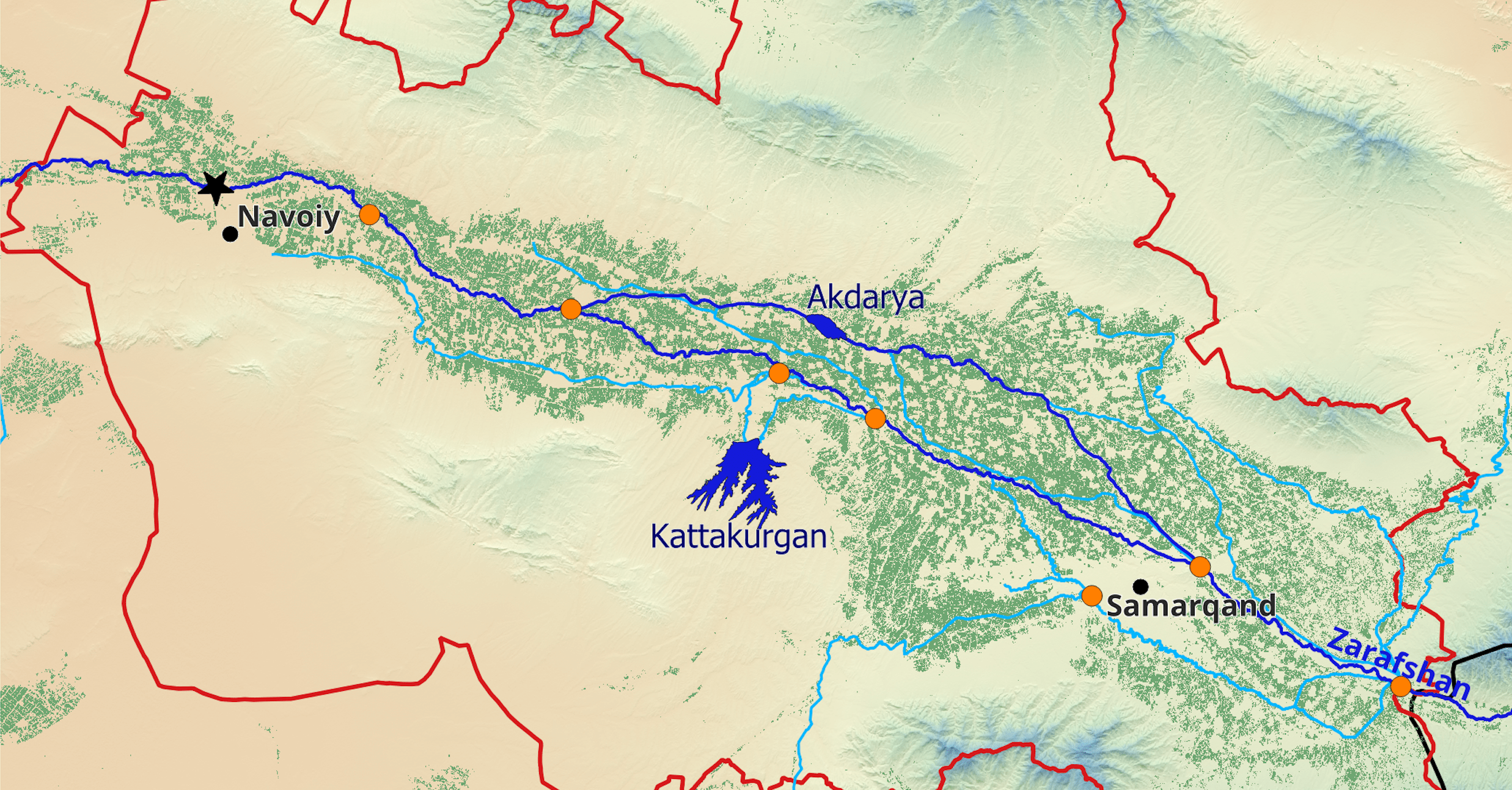Advancing Irrigation and Climate Adaptation in Ukraine
hydrosolutions GmbH partners with the World Bank to strengthen Ukraine’s irrigation sector, focusing on sustainable water and energy use, climate resilience, and agricultural productivity. Our past work included leading remote sensing analyses to assess irrigation performance, while ongoing efforts use hydrological modelling to explore sustainable irrigation expansion. Additionally, in an upcoming project, we will quantify energy use for irrigation and greenhouse gas emissions across Ukraine and the entire Europe and Central Asia (ECA) region.
Area requiring irrigation in average years under the current climate
Area requiring irrigation in extremely dry years under the current climate
Extent of irrigated area in Ukraine 2017-2021
Area with significant declines in irrigated crop production due to war-related impacts
Our Work in Ukraine
Over the past few years, hydrosolutions GmbH has collaborated closely with the World Bank to address Ukraine’s irrigation challenges through targeted analyses in water and energy security. Given Ukraine’s vital role as a global agricultural producer, ensuring resilient irrigation infrastructure is essential, especially amidst challenges from war and climate change. Our involvement began with the Comprehensive Water & Energy Security Analysis for the Irrigation Sector in Ukraine, where we provided remote sensing and water management expertise to help prioritize post-war investments and improve long-term agricultural resilience. We contributed to the first Rapid Damage and Needs Assessment (RDNA1) report, featuring our web application to visualise irrigated areas by conflict zones. This assessment—carried out by the World Bank, the Government of Ukraine, the European Commission, and the United Nations with support from other partners—provides regular estimates of damage, losses, and recovery needs.
Phase I: Remote Sensing Expertise
In our initial work on the Ukraine project with the World Bank, hydrosolutions led the remote sensing analysis to assess the past performance of Ukraine’s irrigation sector and to evaluate damages and losses from the war. This analysis highlighted yield differences between rainfed and irrigated agriculture, identifying areas where irrigation could enhance productivity, particularly inUkraine’s southern regions. Our contributions were included in findings published in a Nature Food article, which underscored the urgent need for irrigation expansion to maintain current production levels across the country in light of projected climate changes. Even for the present climate, our findings indicated that 3 million hectares of farmland would require irrigation to avoid green water scarcity—a situation where soil moisture (or "green water") from rainfall is insufficient to support optimal crop growth (Figure 1). This figure is substantially more than the currently irrigated area, which remained steady at 0.42 million hectares from 2017 to 2021 (excluding areas with only supplemental irrigation, which are undetectable with remote sensing due to the method’s limited sensitivity). This irrigated area has since dropped dramatically due to the ongoing war.

Phase II: Hydrological Modeling
Building on our initial remote sensing work, hydrosolutions transitioned into a lead hydrologist role. In Phase II, we are working with expertise from the Ukrainian Hydrometeorological Institute, which developed a SWAT (Soil & Water Assessment Tool) model for Ukraine through extensive data collection efforts over the past five years. Their online platform Land & Water is configured to visualise hydrological parameters across Ukraine’s river basins. We use their agro-hydrological model to assess irrigation water requirements for current and future agriculture.
Preliminary findings from this detailed model indicate that currently, a total area of 2.5 million hectares in average years and up to 8.5 million hectares in dry years require irrigation (Figure 2). These results align closely with findings from the Nature Food article, which used a simpler model with coarser spatial and temporal resolution. Together, this work provides valuable insights for climate-resilient agriculture in Ukraine, detailing where sustainable irrigation expansion is most feasible under varying climate conditions.

Expanding Our Expertise in ECA
Beyond our work in Ukraine, hydrosolutions continues to collaborate with the World Bank on the Harnessing the Power of Irrigation for Climate Adaptation in Europe and Central Asia (ECA) project. In this regional initiative, we once again bring our remote sensing and GIS expertise to the table, working with a team of experts to assess irrigation performance and develop strategies to inform climate resilient irrigation development across the ECA region. A significant aspect of our work involves quantifying energy use for irrigation. Using our detailed maps of irrigated areas and irrigation volumes, we assess the energy demands for both groundwater and surface water irrigation across 21 countries. Applied specifically to Ukraine, this analysis impressively reveals the substantial energy requirements of Ukraine’s existing irrigation infrastructure, which relies heavily on pumped surface water through lift irrigation. These irrigation systems—the largest in Europe—were built during the Soviet period and require water to be pumped up to a 100-meter elevation difference (Figure 3), a challenge further exacerbated by the destruction of the Kakhovka dam in June 2023. These analyses are crucial in calculating related greenhouse gas emissions from energy consumption in the irrigation sector. Our insights enable a more informed approach to sustainable irrigation practices, supporting policy decisions that address water and energy efficiency and food security.

Moving Forward
Our involvement in these projects highlights hydrosolutions’ commitment to supporting climate adaptation and agricultural resilience through cutting-edge hydrological modelling and remote sensing. We are proud to provide the analytical foundation needed to inform sustainable water management and investment strategies to navigate the twin challenges of climate change and conflict in Ukraine. Stay tuned for more updates as we advance these essential projects in Ukraine and beyond.
Downloads
More Projects






